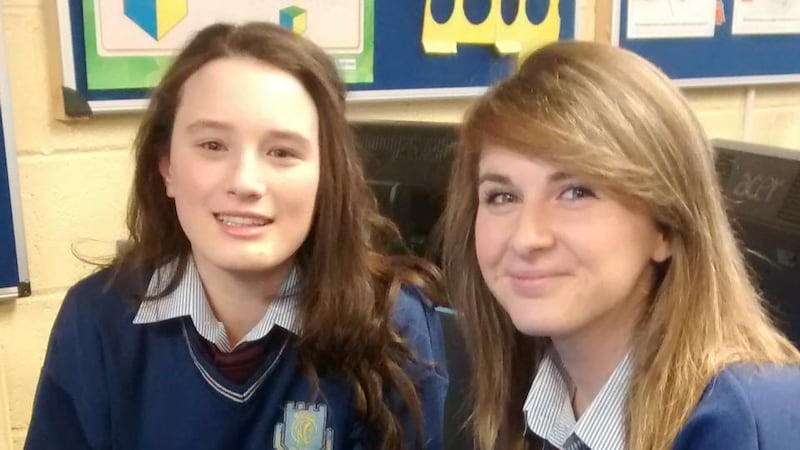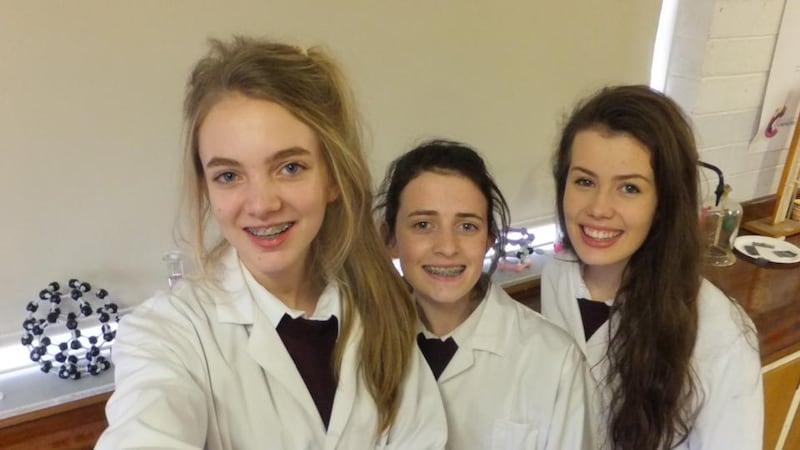Self-portraits, or selfies, have become the most popular genre of photo, with Twitter declaring 2014 the year of the selfie. But what drives people to upload pictures of themselves to social media, and can the selfie trend last?
This is just one of the topics being explored by students at this year’s BT Young Scientist and Technology Exhibition.
The exhibition, which begins on Wednesday, is expected to attract 50,000 people, making it one of the largest events of its kind worldwide. There will be 550 student projects on display over the course of the four-day event in Dublin’s RDS.


Eve McDonagh, Laura Doonan and Niamh Moore of Loreto Secondary School in Navan, Co Meath are examining the science behind the selfie.
Their project aims to investigate what drives people to upload pictures on social media and whether the popular trend can last.
“We noticed the selfie had become very popular in a short space of time. We wanted to find out why it is so popular,” McDonagh said.
The three surveyed 400 female students between the ages of 12 and 16, finding that 10 per cent of students edit every selfie they post online. Furthermore, 62 per cent of those surveyed spent up to five minutes editing their selfies before posting them online.
“What we were most surprised by is how long the girls spent editing their photos. They all wanted to portray a perfect version of themselves. Photos in magazines are not a realistic version of people as they are air brushed, but I think a lot of teenage girls don’t realise that,” McDonagh said.
She said research had found 31 per cent of students take more than 10 selfies per week, while 72 per cent edit their selfies before posting them online.
Help your memory
Christopher Carragher
, a sixth year student at Our Lady’s Secondary School in Castleblayney, Co
Monaghan
, has created Memory Buddy, an automated system to help people with memory loss.
The 18-year-old said he came up with the idea for the device after a family member began experiencing short-term memory difficulties.
“My grandmother was in the early stages of Alzheimers. I wanted to help her remember where she left things such as her keys and phone. She can press a button on the device that has a picture of keys next to it, and then a keyring on her keys starts beeping so she can locate them.”
The electronic system uses Google Calendar to alert a user to appointments and when it is time to take medication, through a system of flashing lights, sound and the TV. The box also has a remotely controlled medicine drawer which dispenses the right medicine at the right time.
“The device has a speaker built into it. It says ‘medicine time’ when it is time to take medicine. It is also connected to the TV and will cut across the TV. It will changed the channel to a screen that says ‘medicine time’. It will also dispense the exact amount and can alert a carer if the medicine hasn’t been taken,” he said.
Robotic arm
Alex Griffin
(16) and
Kevin Moran
(15), both Transition Year students at
Salesian Secondary College
in
Limerick
, have designed and manufactured an electronically controlled robotic arm.
The portable, remote controlled robotic arm is capable of manipulating small hand tools such as a screw driver.
They said developing the prototype taught them about mechanical engineering and electronics.
“It’s a remote control car with a robot on top of it. The robot arm can be used in dangerous situations as it can be controlled remotely,” Moran said.
Social media friends versus real friends
Rebecca Shine
and
Tara Buckley
, of Scoil Mhuire gan Smál in Co Cork, have done a thematic analysis of social media friends versus real friends.
The two students wanted to find out why young people talk to each other for hours on social media, but then ignore each other in real life.
“We picked the project because it’s something we can relate to and have both experienced,” Shine said.
“With technology becoming more popular, people are losing their interaction levels and are finding too much comfort behind a computer screen.”
The two students wondered if it was a problem of self confidence, with people believing they cannot live up to their online profiles, or is it that people genuinely want nothing to do with the person when they are not talking behind a computer screen.
“You can spend your time in deep conversation with someone online, developing a personal relationship, however when you meet them in person you are suddenly lost for words or barely acknowledge each other,” Shine said.
The students surveyed 389 students from three schools – a boys’ school, a girls’ school and a mixed school – for their project.
Buckley said early results from surveys showed students from the girls’ school find it easier to have a conversation face to face while students from mixed schools found it hardest.
“Students from the girls’ school were also more confident talking to strangers when they met them face to face,” Nuckley said.
Furthermore, only one in 10 people in single sex schools don’t use social media. This compares with one in five for mixed schools.
The two students also found different trends regarding social media.
For example, younger students were using Snapchat more, whereas older students were using Facebook.















